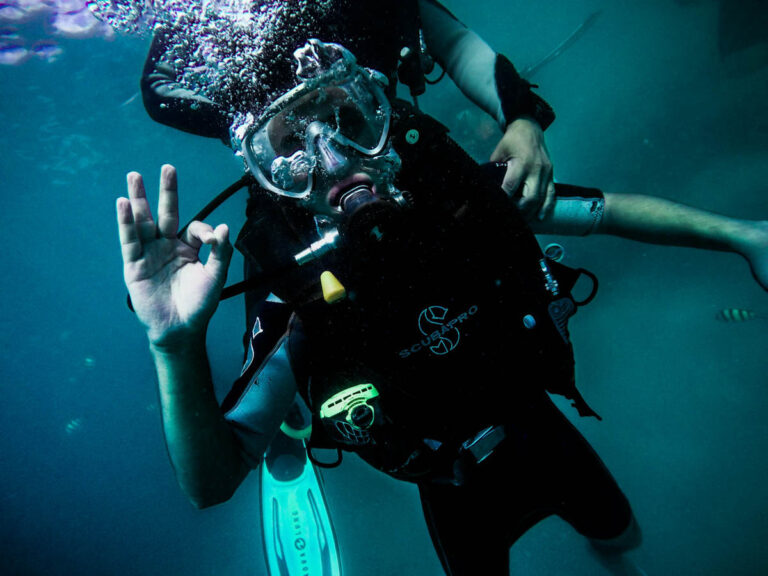Risk management is a proactive approach that involves recognizing potential risks, assessing their impact, and developing strategies to minimize or mitigate those risks during diving operations. Effective risk management also includes preparing for emergencies and understanding how to reduce the reliance on external rescue services.
The goal of rescue risk management (RM) in diving is to lower the risks associated with diving activities to a level that is acceptable to both the individual diver and society at large.
The Risk Management Process
An ideal RM process identifies the risks that have the greatest potential for loss and the highest probability of occurring. It prioritizes these risks, addressing the most critical ones first and then working down the list. However, in practice, this is not always straightforward. Balancing a low-probability, high-consequence risk with a high-probability, low-consequence risk can be complex and prone to misjudgment.
There are also “intangible risks”—those with a 100% likelihood of happening but often overlooked due to difficulty in identification. For instance, when a diver operates beyond their training or skill level, the limitations in their knowledge can manifest into poor diving decisions or unsafe procedures.
These intangible risks not only jeopardize dive safety but also compromise the diver’s ability to perform self-rescue or be rescued by others.
Resource Allocation Challenges
Effective risk management in diving involves allocating resources like time, money, manpower, and equipment wisely. Misallocation is a risk in itself, as resources can often be diverted to more profitable or seemingly urgent areas, leaving crucial safety measures under-resourced.
The key to successful RM is finding a balance in resource allocation while ensuring that risk management remains an ongoing, evolving process. This should span across all dives and be continuously adapted based on lessons learned from past experiences.
The Value of Risk Management
Effective risk management delivers several benefits:
- Structured Diving Operations: Establishes a clear framework for consistent, controlled dive planning.
- Improved Decision-Making: Supports better decisions through continuous learning and assessment.
- Efficient Resource Use: Optimizes the allocation of time, money, and equipment.
- Enhanced Safety: Protects divers, equipment, and rescue services by minimizing potential risks.
- Knowledge Development: Expands the knowledge base of divers, dive centers, and support personnel.
- Operational Efficiency: Streamlines diving operations and ensures smoother execution.
- Positive Safety Reputation: Improves the image of recreational diving as a safe activity.
Addressing Intangible Risks in Training
Unfortunately, many reputable rescue, Divemaster, or Instructor training courses don’t emphasize risk assessment as they should. This often leaves divers without the detailed knowledge required to accurately evaluate risks. Poor training can lead to a false sense of security, where divers believe they understand risks but do not.
To reduce intangible risks, risk identification must be approached systematically. All significant diving activities should be identified, and potential hazards flowing from those activities carefully defined.
Common Diving Risks
There are many risks in diving, ranging from equipment failure to human error. A formalized risk table can be helpful in describing and assessing these risks comprehensively.
It’s crucial to avoid spending too much time on improbable risks. While unlikely events can happen, focusing on more realistic scenarios will provide the greatest safety benefits. For example, while the chance of an entire dive group running out of gas simultaneously is low, the likelihood of one diver running low on gas after a deep dive is much higher. Therefore, preparing for individual gas shortages by placing an extra cylinder at the safety stop or matching gas consumption within buddy teams is a practical risk mitigation strategy.
Final Thought: Is it Worth It?
Some may feel that such detailed risk management is unnecessary for recreational diving. However, history has shown that those who ignore these risks are often the ones involved in accidents. Isn’t a little extra effort worth the peace of mind and safety?
The True Value of Risk Management
While the theory and planning behind risk management are important, its real value lies in day-to-day operational implementation. Without consistent application during daily diving activities, risk management strategies are merely theoretical and offer no tangible protection.
It’s through regular integration into dive planning, preparation, and execution that risk management truly safeguards divers, resources, and overall safety.
Any dive professional today without active risk management implementation is asking for trouble.







